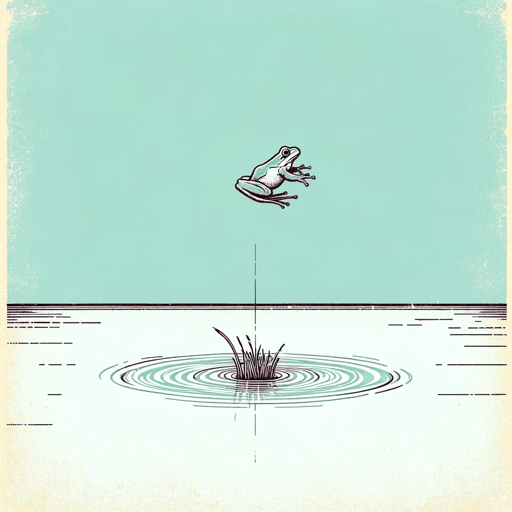10 pages • 20 minutes read
BashoOld Pond
Fiction | Poem | Adult | Published in 1686A modern alternative to SparkNotes and CliffsNotes, SuperSummary offers high-quality Study Guides with detailed chapter summaries and analysis of major themes, characters, and more.
Themes
Movement as a Conduit to Wonder
Though Zen Buddhism influences Bashō’s work, Bashō personally doesn’t espouse a strict Buddhist way of living. Moreover, where some tenets of Buddhism might focus on stillness or meditation as the best way to find wonder or enlightenment or removing oneself from the world to reach new heights, Bashō embraces nature and movement. Bashō began traveling and living in nature to better understand life’s wonders, and in “Old Pond,” he uses movement as a conduit to such enlightenment. The frog’s splash sets up an “aha!” moment where the frog’s physical body hitting the water mimics a thought rippling through Bashō’s brain. Movement allows people to discover new ideas and ways of thinking.
Lightness as a Way of Life
“Old Pond” appears simple on its surface, but the haiku advocates for a symbolic type of simplicity called karumi, or lightness, which is a term Bashō used both as a theme in his work and as a recurring motif. Karumi is the acceptance of the natural world and all its flaws rather than the rejection of it. Living life with such lightness allows one to embrace the playful, transitory nature of life rather than the sadness that might exist in knowing that life is finite.

